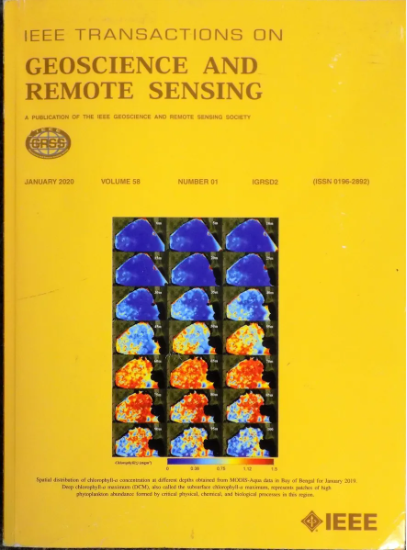基于多阶段搜索的轻量级多尺度、多注意力高光谱图像分类网络
IF 7.5
1区 地球科学
Q1 ENGINEERING, ELECTRICAL & ELECTRONIC
IEEE Transactions on Geoscience and Remote Sensing
Pub Date : 2025-03-20
DOI:10.1109/TGRS.2025.3553147
引用次数: 0
摘要
本文章由计算机程序翻译,如有差异,请以英文原文为准。
A Lightweight Multiscale and Multiattention Hyperspectral Image Classification Network Based on Multistage Search
Hyperspectral image (HSI) classification has become a core task in hyperspectral remote sensing interpretation, with deep learning dominating due to its ability to learn hierarchical features without manual engineering. As the model complexity has grown, manual design limitations have prompted a shift to automated approaches such as differentiable architecture search (DARTS), where the architectures are optimized for greater accuracy and efficiency. However, applying gradient-based neural architecture search (NAS) methods directly to hyperspectral classification presents several challenges. Regarding search space design, there is a lack of lightweight operators that can mitigate the spectral variability, spatial heterogeneity, and scale differences inherent in hyperspectral imagery. In terms of search strategy, the traditional DARTS approach directly derives the topology from operation weights, which can lead to suboptimal topological structures, and thus affects the performance of the network in HSI classification. In this article, to address these issues, we propose L3M, which is a lightweight multiscale and multiattention HSI classification network based on multistage search. The proposed approach introduces a novel lightweight operator to address the spectral variability, spatial heterogeneity, and scale differences in HSIs. The operation search and topology search are also decomposed into a multistage process to prevent a suboptimal network by searching for and determining the topological order of the candidate operations in a predefined operation space. L3M was validated on four public datasets, where the proposed model demonstrated a superior classification performance, compared to other lightweight models, while maintaining a low parameter count, low model complexity, and high inference speed.
求助全文
通过发布文献求助,成功后即可免费获取论文全文。
去求助
来源期刊

IEEE Transactions on Geoscience and Remote Sensing
工程技术-地球化学与地球物理
CiteScore
11.50
自引率
28.00%
发文量
1912
审稿时长
4.0 months
期刊介绍:
IEEE Transactions on Geoscience and Remote Sensing (TGRS) is a monthly publication that focuses on the theory, concepts, and techniques of science and engineering as applied to sensing the land, oceans, atmosphere, and space; and the processing, interpretation, and dissemination of this information.
 求助内容:
求助内容: 应助结果提醒方式:
应助结果提醒方式:


